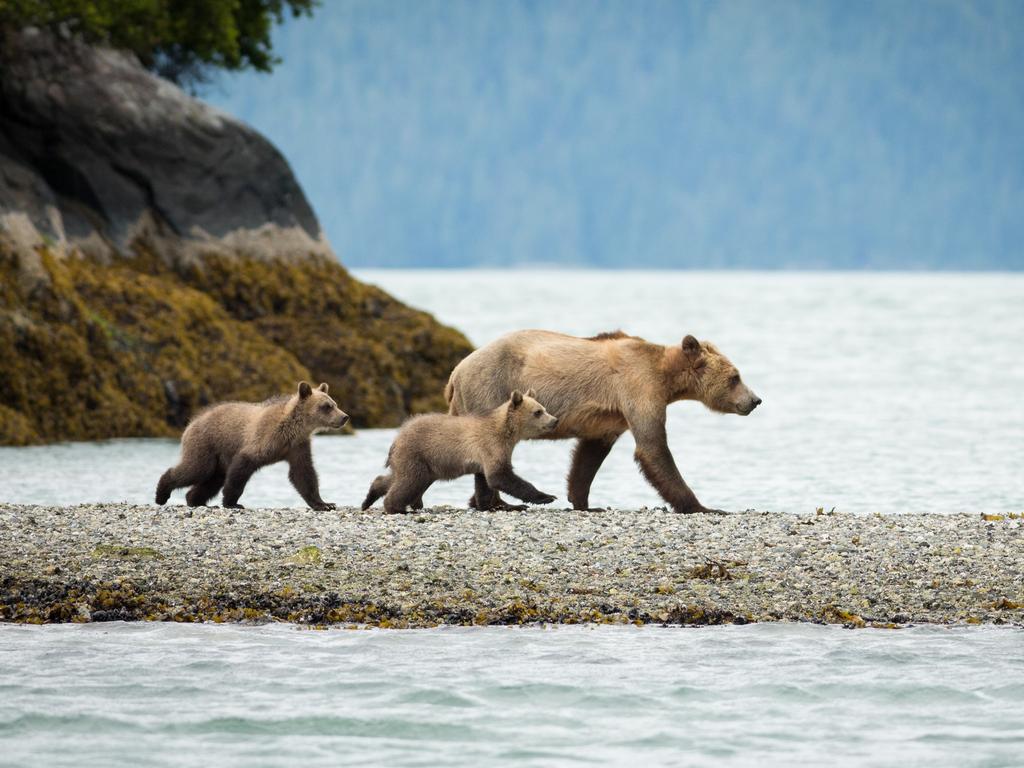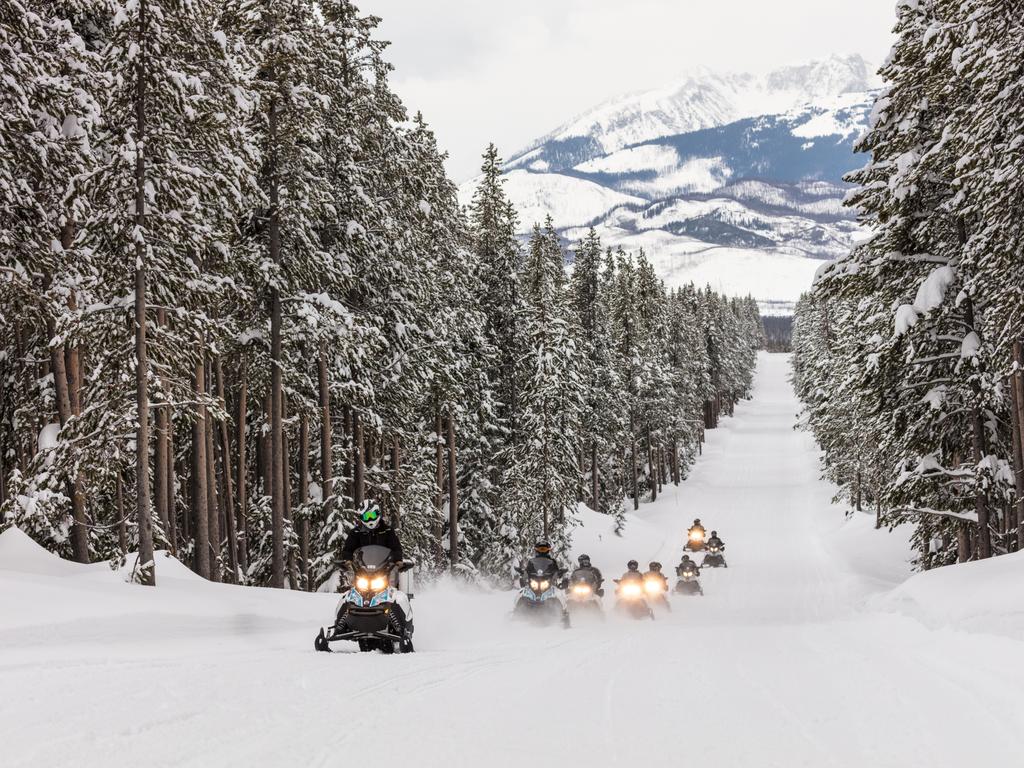Saskatchewan is unlike any other place in Canada
Famously lacking in the country’s dramatic mountain scenery, Saskatchewan has 100,000 lakes, wild animals and unique ranch stays.

Canada is renowned for its dramatic mountain scenery, but the western province of Saskatchewan is famously flat. What it lacks in altitude it makes up for in many other ways.
1. What it’s like in Saskatchewan
The locals have a droll counter to jokes about their featureless land, gags such as: “No one has ever fallen to their death in Saskatchewan.” They call it flattery. Yes, this western Canadian province is vertically challenged. The northern half is nothing but forest, which is interspersed with more than 100,000 lakes and is an apt setting for the 2023 season of Alone. Everyone, but still just 2 per cent of Canada’s population, lives in the bottom half. But they have 20 per cent of the nation’s roads to zoom around on, through rich grazing pasture and grainfields that feed the world. Most of Saskatchewan’s durum wheat goes to Italy for pasta, and the lentils are prized in India. Locals also point out to the flat-earth wags that Saskatchewan hosts the highest point between the Rockies and the Atlantic, in Cypress Hills Interprovincial Park on the Alberta border, which is notable for its stands of ramrod-straight lodgepole pines and a wild cat population of cougar, lynx and bobcat.


2. Saskatchewan’s bison and nature
Saskatchewan has 44 per cent of Canada’s farmland, created on what was once one of the largest prairie ecosystems in the world. Its character is preserved down near the US border in Grasslands National Park, the only park of its type in Canada. Its plains are broken up by glacial depressions called coulees, and in which, on a 50km eco-drive, you’ll see grazing bison (BYO binoculars). Once numbering 50 million on these plains, bison had been obliterated by the 1880s, but a herd of 71 reintroduced to the park in 2005 has grown to 600. Grasslands is also the only place in Canada to spot the black-tailed prairie dog, a frantic little squirrel. The reserve is dotted with ancient stone circles and cairns, about which the parks people are working with tribes to learn more. A rare chance to walk uphill is rewarded with 360-degree views from atop 70 Mile Butte, where I spy my first, and hopefully only, rattlesnake.

3. Star gazing in Saskatchewan
Saskatchewan’s motto is the Land of Living Skies, and that’s 24/7. Being in the sparse southwest, Grasslands National Park has been declared a dark sky preserve, the darkest in Canada and one of the largest in the world, and it hosts annual star parties. Ditto over near Cypress Hills, in the town of Maple Creek, where a star party every July/August coincides with the Perseid meteor shower. (Maple Creek’s other claim to fame is a toy store with the best jigsaw assortment you’ll find.) And you don’t need to head into the Arctic for the northern aurora; when conditions are right, it can be seen all over the province, in February to April and September to October.
4. Finding fossils
Scotty, the most notable resident of tiny Eastend, was a feisty character who saw her fair share of scrapes. That’s what palaeontologists have deduced from the fossilised remains of the world’s largest – not tallest or longest but heaviest – tyrannosaurus rex skeleton, the star attraction at Eastend’s T.rex Discovery Centre, a branch of the Royal Saskatchewan Museum. Scotty was unearthed in Grasslands National Park, and while not complete, with half a leg, arms and other bones missing, they’ve got enough to know she was female, died aged about 28 and, judging by the scars on her skull, fought a lot of battles. Unlike the world-leading Royal Tyrrell paleo museum next door in Alberta, the T.rex Centre is Dinosaurs for Dummies, making it approachable and fascinating. Saskatchewan is fossil-rich, and the centre holds many wondrous exhibits, from coprolites to the skull of Frankie the triceratops.
5. Experience ranch life
Right on the Alberta border is Reesor, Saskatchewan’s first officially historic ranch and a showcase of cowboy life with mod-cons thrown in. Scott Reesor, whose family has reared cattle here since 1906, will greet you, write your order for perfectly barbecued steak on his hand, regale you with frontier poetry and demonstrate the art of whip-cracking. His wife Theresa, meanwhile, shows you into your lodgings in the century-old farmhouse and leads walks into the forest. On a horse ride, young guide Emily points out the beauty and quirks of the country; those mountains are covered in molehills, moles being the favourite food of coyotes (pronounced “ky-yote” in these parts). On a pre-breakfast walk as the rising sun sets the prairie aglow, I hear their eerie yip before spotting a pair scurrying across the hill.


6. First Nations culture in Saskatchewan
Saskatchewan has no World Heritage sites, and they’re working to change that, poking and scraping around a patch of prairie north of the province’s largest city Saskatoon for more evidence of thousands of years of First Nations habitation and culture so as to merit a listing. The area’s significance has already spawned Wanuskewin Heritage Park, its genesis coming in the late 1970s when anthropologist and archaeologist Ernie Walker announced he’d found a medicine wheel and ancient petroglyphs on a ranch. Further investigation yielded bison jumps and stone tipi rings. “Nowhere else are they (all) so close,” says Walker. “They’re yelling and screaming to be found.” The Wanuskewin Heritage Centre includes interactive galleries of Northern Plains history, culture and art, but you’re more authentically immersed on 7km of walking trails around the dig sites.

7. Whisky a go-go
John Cote and Barb Stefanyshyn-Cote are Canadian farming royalty, the first couple to each win the world-renowned Nuffield agricultural scholarship. But these grain growers wanted something “closer to the customer” and sold the family farm – “sacrilege in SK,” says Barb. They’re still up to their ears in grain, although now it’s distilled into whisky and gin at Black Fox Farm, just south of Saskatoon. It’s unique in many ways, such as using triticale, a wheat-rye hybrid ordinarily grown for fodder. And 100 per cent of everything, from the botanicals to the ethanol, is produced on the farm. Then there’s the ageing process, where the whisky is put outside, because the couple naively thought it wouldn’t be detrimental, even through a Canadian winter. The result is a more developed style that tastes much older than its barrel age. The downside is much higher evaporation, or angels’ share, of 8 per cent against a usual 3 per cent. “We just have happier angels,” says Cote. They do three whiskies: a bold single grain, a spicier blend (currently malt barley, rye and a bit of wheat) and a fruitier single grain aged in marsala barrels. Triticale blended with rhubarb constitutes their mainstay Canadian Gin, but there’s nothing more refreshing that Cucumber Gin with ginger ale.

8. Where to eat in Saskatchewan
Good restaurants in small towns mostly have short use-by dates, but such has been the renown of Harvest Eatery, opened by Kristy and Garrett “Rusty” Thienes in 2013, it’s still thriving with a catchment far beyond its small home town of Shaunavon, 350km west of the capital, Regina. It’s all down to the Thienes’ faultless treatment of local meat, starting with bison meatballs, which are beefed up with pecorino romano, banana peppers and truffle, although the signature starter is wagyu tataki augmented by togorashi spice and ponzu. The ribeye steak is sumptuous, and for dedicated beef eaters there’s a 1.25kg tomahawk. The wine list has a purview well beyond Shaunavon, representing modern styles from Europe, the Americas, Australia and New Zealand.

9. Art in the capital
Being a government town, Regina can’t generate the buzz of the slightly larger Saskatoon, 260km to the north. The latter, known as the City of Bridges for the plethora of crossings of the South Saskatchewan River that bisects it, has a big arts and culture scene. It’s headlined by the Remai Modern’s collection of modern and contemporary works, including a significant stash of Picasso linocuts. Across the river is the city’s most vibrant street, Broadway Ave, home to the community-owned Art Deco Broadway Theatre, high-end shopping and craft breweries plus Odla, which serves exciting food straight off the holistically managed farm of co-owners Arlie and Brett LaRoche.


10. Where to stay in Saskatchewan
The province’s best hotels have history on their side. In Regina, Hotel Saskatchewan opened in 1927 – the fourteenth and last of the chain of great establishments created by Canadian Pacific Railroad for its passengers. Modernised and now residing in Marriott’s premium Autograph Selection, its lobby lounge Circa 27 served up the most succulent pork chop (with wild rice) I’ve tried. Saskatoon’s The James remains with the family that opened it in 1935, but regular upgrades haven’t diminished its charm or boutique character. Down among the grasses, T-rexes and stars of southwestern Saskatchewan, the Crossing at Grasslands has three self-contained suites with luxurious touches.
Jeremy Bourke was a guest of Tourism Saskatchewan and Destination Canada
br-keepexploring.canada.travel
If you love to travel, sign up to our free weekly Travel + Luxury newsletter here.





To join the conversation, please log in. Don't have an account? Register
Join the conversation, you are commenting as Logout